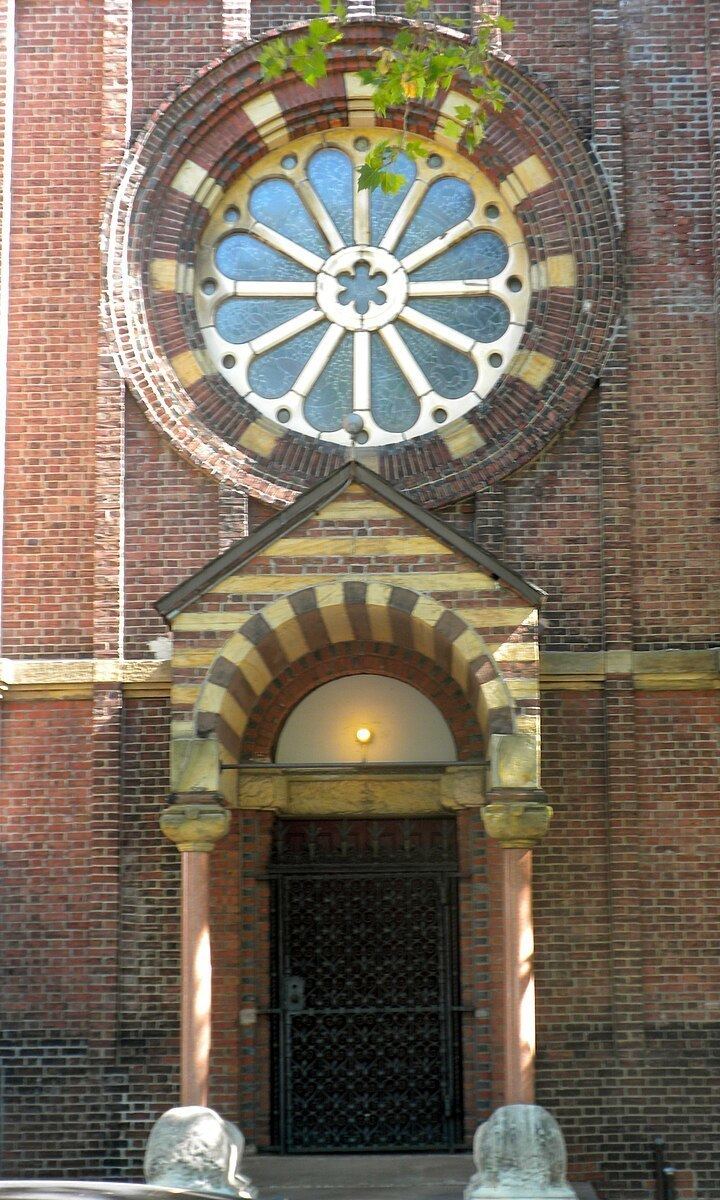Area 0.3 acres (0.12 ha) Added to NRHP November 14, 1982 | Built 1857 NRHP Reference # 82001547 Phone +1 215-922-3456 | |
 | ||
Location 711-721 Catharine St., Philadelphia, Pennsylvania Address 719 Catharine St, Philadelphia, PA 19147, USA Hours Open today · 9AM–4PMSaturday9AM–4PMSundayClosedMonday9AM–9:30PMTuesday9AM–9:30PMWednesday9AM–9:30PMThursday9AM–9:30PMFriday9AM–4PMSuggest an edit Similar Pennsylvania Academy of the Fin, Philadelphia Art Alliance, Moore College of Art and D, Philadelphia Sketch Club, Abington Art Center Profiles | ||
Samuel S. Fleisher Art Memorial, also known as Church of the Evangelists and St. Martin's College for Indigent Boys, is a set of four buildings with a history that unites idealism or religious beliefs, service to the poor, and art. Formerly an Episcopal church in the working-class Bella Vista neighborhood of South Philadelphia, it is best known as the home of the Graphic Sketch Club founded by Samuel S. Fleisher, which offers free art lessons to children and adults.
Contents
- Meet our clients samuel s fleisher art memorial community design collaborative
- Church
- Art school
- References
The four buildings include a campanile built in 1857, a basilica built 1884-1886, St. Martin's College built in 1906, and two rowhouses built in the 1850s. Since Fleisher's death in 1944, his trust, which owns the buildings, has been administered by the Philadelphia Museum of Art. The Art Memorial was listed on the National Register of Historic Places in 1982 and is located at 711-721 Catharine St. in Philadelphia, Pennsylvania.
Meet our clients samuel s fleisher art memorial community design collaborative
Church
The Church of the Evangelists was established as a mission church for the poor of Catherine Street in 1837, by Episcopalians named William Welsh and Horace Binney, among others. A church building was constructed in 1857 which includes the campanile which still stands. The church's viability became a concern by 1880, possibly because of the influx of non-Episcopal immigrants to the neighborhood.
Henry Robert Percival, a well-known high church Episcopal priest, revived the fortunes of the Church of the Evangelists when he was appointed rector about 1880.
The well-connected Percival had traveled in Italy and had "a sensibility which combined Italian and Anglo-Catholic romanticisms." He wished to rebuild the church based on the Romanesque models of St. Mark's Basilica in Venice, the Cathedral of Pisa and the Orvieto Cathedral. The 1884 design by the firm Furness and Evans was in actuality based on San Zeno Maggiore in Verona.
Frescos in the church were painted by Robert Henri, Nicola D'Ascenzo, and by local parishioners. Much of the interior decorative work was left unfinished. The influences on the architecture include "Italy, Ruskin, the ecclesiological movement, and the pageantry of medieval Christianity." James van Trump is more critical, stating that "a rather self-conscious coterie of late nineteenth century Philadelphia haute bourgeoisie, 'engaged', one might say in being 'Catholic', cultivated, and artistic."
After Percival retired on account of illness in the 1890s, the church's fortunes declined. St. Martin's College for Indigent Boys was built in 1906, perhaps in an effort to fight the decline and better connect with the non-Episcopalian neighborhood.
Art school
Samuel Stewart Fleisher, the son of German Jewish immigrants, became vice-president of the family business after graduating from the Wharton School of Business. By that time the family business, the Fleisher Yarn Company, was a major manufacturer of hand-knitting yarns and worsted fabric. Fleisher was extraordinarily concerned for the welfare of the company's workers, their children, and others who lived in the neighborhood.
Thousands of young people toil during the day whose lives are unavoidably cast upon a background of routine and sameness—the world’s work must be done—to them should be offered pastures where beauty and inspiration may be gathered, places where rich and poor alike may give expression to their finer emotions—playgrounds for the soul.
Fleisher started offering free art classes to children in 1898 in the Jewish Union building at 422 Bainbridge Street. Later known as the Graphic Sketch Club, the institution gave free, non-competitive, collaborative classes to both children and adults without discrimination by race or nationality. In 1906 it moved to a larger building at 740 Catharine Street, then in 1916 it moved across the street to Saint Martin’s College for Indigent Boys. The church was purchased and converted into an art gallery in 1922.
In 1944, Fleisher died and left his estate in trust to the Philadelphia Museum of Art to continue the Graphic Sketch Club, which was renamed the Samuel S. Fleisher Art Memorial. In 1983 it became a formally independent non-profit corporation with a separate board of trustees, but it is still managed by the Philadelphia Museum of Art.
The Fleisher Memorial continues to offer free and low-cost classes and workshops to both children and adults, in subjects such as drawing, painting, sculpture, ceramics, photography, and dance. Since 1997 they have also offered the "Community Partnership in the Arts" program which places artists in public school classrooms in South Philadelphia. Artists teach students for 90-minute classes twice a week for 6–10 weeks. Ceramist Winnie Owens-Hart is among the artists who have worked at the Memorial.
The gallery contains art by Violet Oakley, tiles by Henry Chapman Mercer, 18th-century Portuguese art, and primitive European art, as well as the religious art from the original church. There are six early stained glass windows made by Lavers, Barraud and Westlake, and one later window, designed by John LaFarge. Entrance to the gallery is free, Monday through Friday, 10 a.m. to 5 p.m. with reduced hours on Saturdays.
